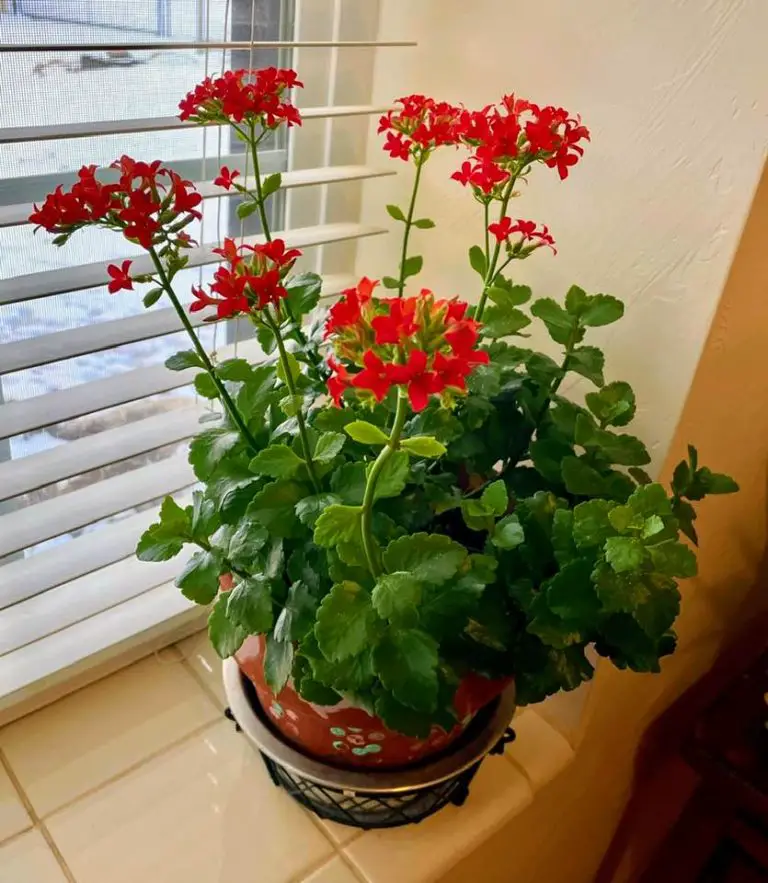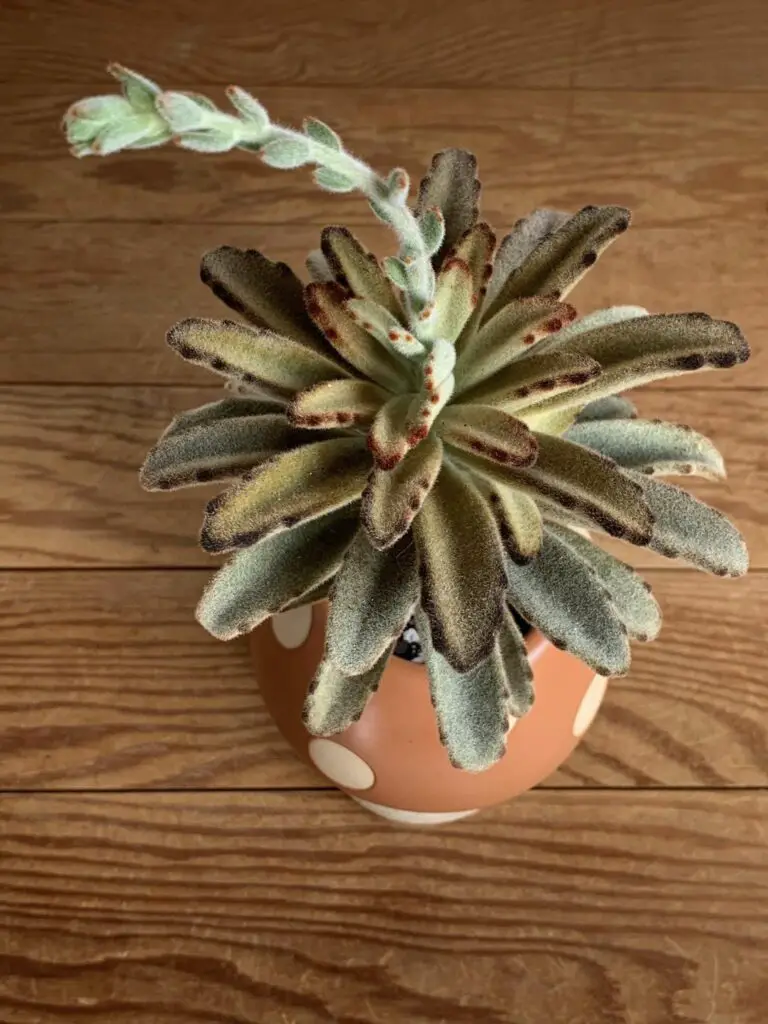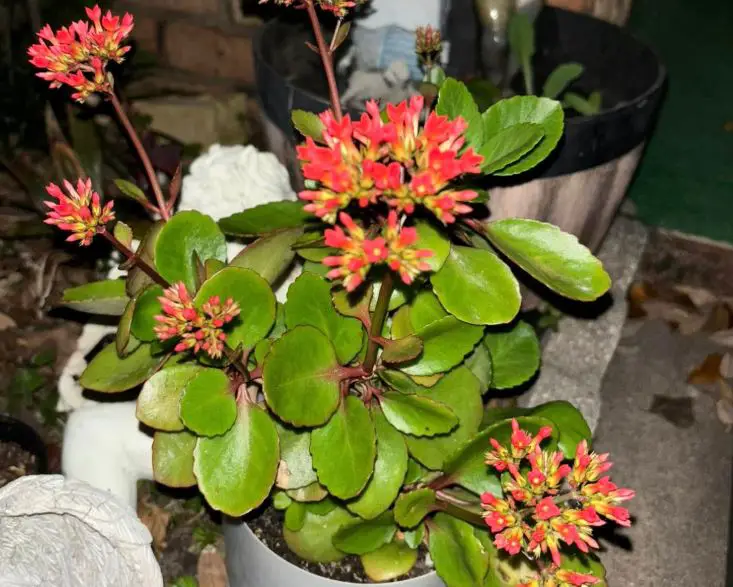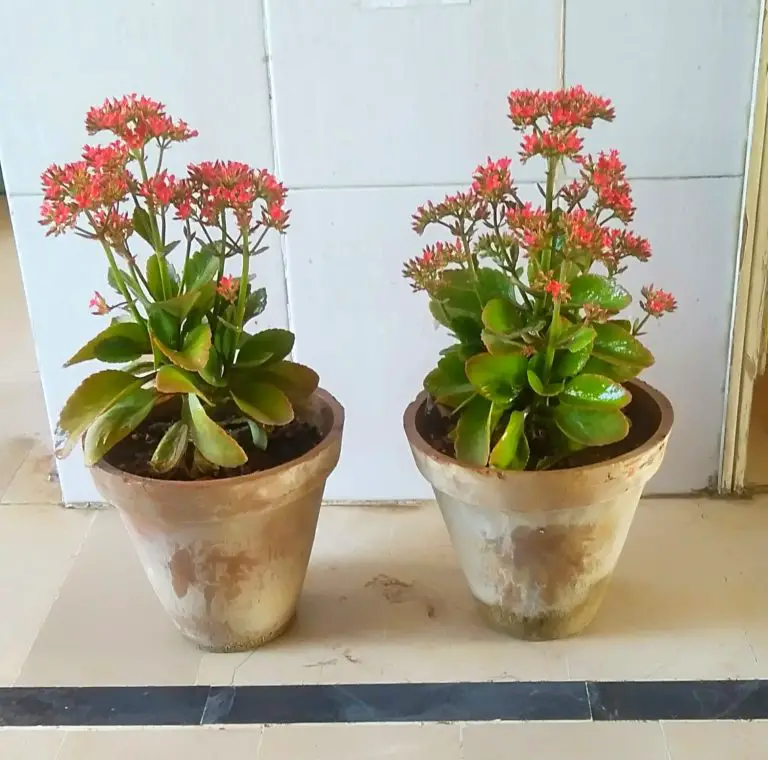7 Reasons Your Flaming Katy Isn’t Blooming (And How to Fix It)
When I first got my Flaming Katy (Kalanchoe blossfeldiana), I was obsessed with its vibrant blooms. Those clusters of red, pink, and yellow flowers lit up my living room! But then, one season, the flowers just… stopped. No blooms, just green leaves staring back at me.
Sound familiar? If your Flaming Katy isn’t blooming, you’re not alone. This popular houseplant can be a bit fussy, but don’t worry—I’ve been there, and I’ve got you covered. In this guide, I’ll share seven common reasons your Flaming Katy isn’t blooming and how to fix them.
Before we dive in, let’s talk about this plant. Flaming Katy, or Kalanchoe blossfeldiana, is a succulent known for its bright, long-lasting flowers and glossy green leaves. It’s a favorite in many homes because it’s low-maintenance (mostly) and adds a pop of color to any space.
Native to Madagascar, it thrives indoors, in varied climates, from sunny California to chilly New England winters. But when it stops blooming, it can feel like a betrayal. Let’s figure out why.
Why is My Flaming Katy Not Blooming?
Here are the main culprits for this problem:
1. Not enough light
Flaming Katy loves bright light. I learned this the hard way when I stuck mine in a dim corner of my apartment. No flowers, just sad, stretched-out leaves. This plant needs 4-6 hours of bright, indirect light daily to bloom. Direct sunlight can scorch it, but too little light stops flower production.
Fix
- Place your plant near a south- or west-facing window. I keep mine by a window with sheer curtains to filter harsh rays.
- If your home is dark (hello, Seattle winters!), consider a grow light. I use a full-spectrum LED grow light for about 12 hours a day. It’s a game-changer!
- Rotate the pot weekly to ensure even light exposure.
Pro Tip: If your plant’s leaves are stretching toward the light (called etiolation), it’s begging for more. Move it closer to a light source ASAP.
2. Wrong day-night cycle
Flaming Katy is a “short-day” plant, meaning it needs long nights to trigger blooming. In American homes, artificial lights can mess with this. I once left my plant near a lamp that stayed on late, and it refused to bloom. It needs 12-14 hours of darkness at night to set buds.
Fix
- Move your plant to a room where lights are off at night. My guest room works perfectly for this.
- If that’s not possible, cover the plant with a cardboard box from 6 PM to 8 AM for 6-8 weeks. It sounds weird, but it mimics the natural short-day cycle.
- Start this in late fall or early winter to encourage spring blooms.
Pro Tip: Mark your calendar to track the dark period. I forgot once, and my plant took forever to catch up!
3. Overwatering or underwatering
I’m guilty of loving my plants too much with water. Flaming Katy is a succulent, so it stores water in its leaves and hates soggy soil. Overwatering can lead to root rot, which stops blooming. Underwatering, on the other hand, stresses the plant, halting flower production.
Yellowing or Kalanchoe blossfeldiana leaves falling off is one of the main signs of overwatering. On the other hand, shrivelled or wrinkled leaves indicate underwatering.
Fix
- Water only when the top inch of soil feels dry. In my Chicago apartment, this means every 10-14 days in winter and weekly in summer.
- Use a well-draining soil mix. I mix potting soil with perlite at a 1:1 ratio.
- Ensure your pot has drainage holes. I learned this after losing a plant to a decorative pot with no holes—oops!
Pro Tip: Stick your finger in the soil to check moisture. If it’s damp, wait a few days. Your plant will thank you.
4. Lack of nutrients
Flaming Katy needs food to bloom. When I first got mine, I thought it could survive on water and vibes. Nope! Without enough nutrients, it focuses on survival, not flowers.
Fix
- Feed with a balanced, water-soluble fertilizer (like 10-10-10) every 4-6 weeks during spring and summer. I use a succulent-specific fertilizer diluted to half strength.
- Avoid fertilizing in fall and winter when the plant is dormant.
- If you repotted recently, skip fertilizer for 6 months—fresh soil has enough nutrients.
Pro Tip: Overfertilizing can burn roots, so less is more. I set a reminder on my phone to avoid overdoing it.
5. Incorrect temperature
Flaming Katy likes it cozy, just like us. It blooms best between 60-75°F (15-24°C). In most homes in the U.S., especially in colder regions, indoor temperatures can dip too low in winter or get too hot near radiators. Not to mention heatwaves during the hot summer months.
Fix
- Keep your plant away from drafty windows or heating vents. My Minnesota friend lost blooms because her plant was too close to a cold window.
- Aim for 65-70°F at night during the blooming cycle (late fall to winter).
- If you’re in a hot climate like Arizona, avoid placing it near windows with intense afternoon sun.
Pro Tip: Use a small thermometer near your plant to monitor conditions. I got one for $5, and it saves me from guesswork.
6. It’s not old enough (Or needs pruning)
Sometimes, your Flaming Katy isn’t blooming because it’s too young or hasn’t been pruned. I didn’t know this. Pruning encourages new growth and more flowers. Young plants may take a year to mature enough for consistent blooming.
Fix
- Prune leggy stems after blooming (late spring or early summer). I use clean scissors to cut just above a leaf node.
- Remove dead or yellowing leaves to redirect energy to flowers.
- Be patient with new plants. My first Flaming Katy took a full year to bloom reliably.
Pro Tip: Save pruned stems for propagation! I’ve grown three new plants this way, and it’s so rewarding.
7. Stress from pests or disease
Pests like mealybugs or spider mites can stress your plant, stopping blooms. These unwanted guests suck juices from the plant, resulting in damage. I once found tiny white bugs on my Flaming Katy and panicked. Diseases like powdery mildew can also weaken it.
Fix
- Inspect leaves and stems weekly. If you see pests, wipe them off with a cotton swab dipped in rubbing alcohol. I did this, and it worked like a charm.
- For powdery mildew, improve air circulation and reduce watering. A neem oil spray can help.
- Isolate affected plants to prevent spreading to others in your collection.
Pro Tip: Check under leaves where pests hide. A magnifying glass helps spot tiny invaders early.
Tips for Gardeners in the U.S
- In humid areas like Florida, watch for overwatering. In dry states like Nevada, misting lightly can help during winter.
- Adjust care with seasons. Less water in winter, more light in summer.
- If you’re in a small apartment (like many in Chicago), use a grow light and a small pot to keep your Flaming Katy plant happy.
FAQs
Here are frequently asked questions about the Flaming Katy plant not blooming:
Q: How long does it take for Flaming Katy to bloom?
A: With proper care, it can bloom within 6-8 weeks of starting the short-day cycle. New plants may take a year to establish.
Q: Can I force my Flaming Katy to bloom year-round?
A: It’s tough. Flaming Katy naturally blooms in late winter or spring. You can extend blooming with grow lights and controlled darkness, but it needs a rest period.
Q: Is my plant dead if it’s not blooming?
A: Not likely! Green, firm leaves mean it’s alive. Fix light, water, or nutrients, and it should bounce back.
Q: Can I use regular potting soil?
A: It’s not ideal. Mix it with perlite or sand for drainage.
Q: Why are my Flaming Katy’s leaves yellowing?
A: Yellow leaves often mean overwatering or poor drainage. Check the soil and pot, and cut back on water.
Final Thoughts
When I moved to a new apartment in Chicago, my Flaming Katy stopped blooming. I tried everything—more water, less water, moving it around. Turns out, it was getting too much artificial light at night from my living room lamp.
Once I started covering it at night, blooms appeared within two months! It felt like a small victory. If you’re frustrated, keep experimenting. These plants are forgiving, and you’ll find what works for your home.
In most cases, your Flaming Katy isn’t blooming because of light, water, nutrients, or timing issues—trust me, I’ve been there. By giving it bright indirect light, long nights, proper watering, and a little TLC, you’ll see those vibrant flowers again.
I remember the thrill of seeing my plant bloom after months of trial and error. You’ve got this! If you’re still struggling, drop a comment below for real-time tips from other plant lovers. Want me to search for specific advice or analyze your plant’s setup? Just let me know!
Additional Resources
- The Spruce: How to Grow Kalanchoe – Detailed care guide.
- Missouri Botanical Garden: Kalanchoe Blossfeldiana – Plant profile with scientific insights.
- University of Florida IFAS: Houseplant Care – Tips for indoor plants in humid climates.
Tim M Dave is a gardening expert with a passion for houseplants, particularly cacti and succulents. With a degree in plant biology from the University of California, Berkeley, he has vast experience in gardening. Over the years, he has cultivated a vast collection of desert plants and learned a great deal about how to grow and care for these unique companions.






